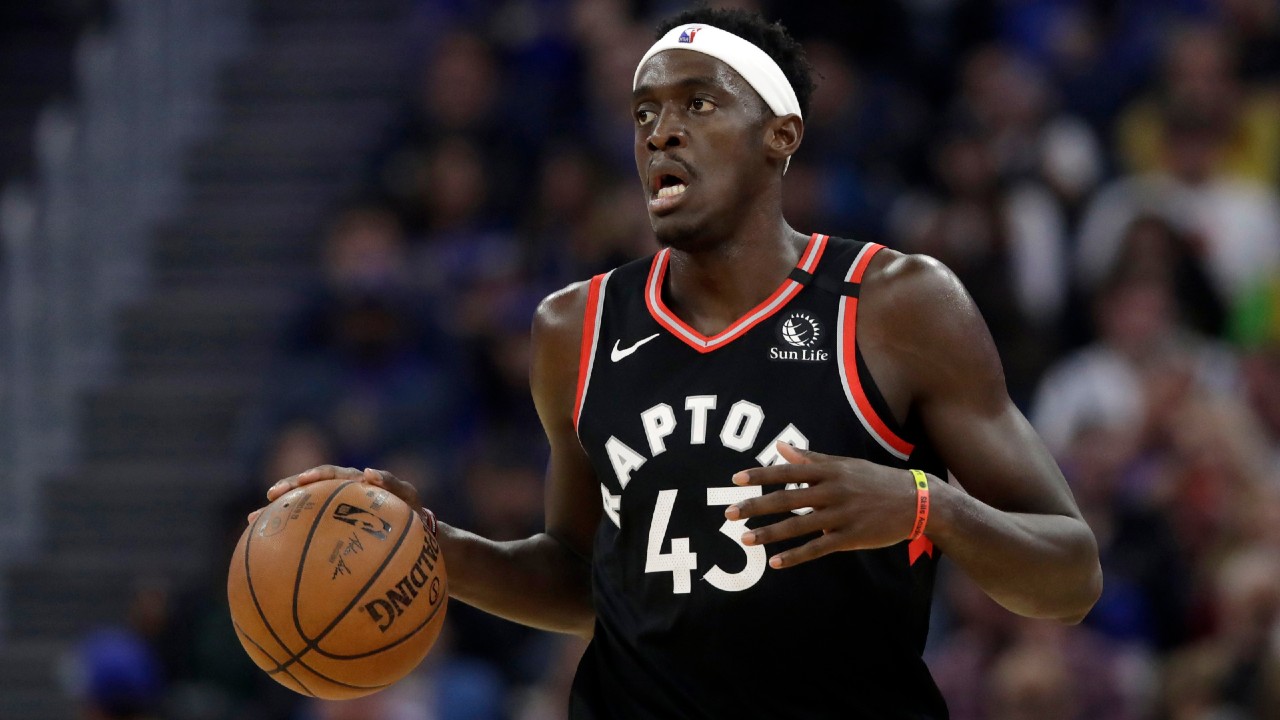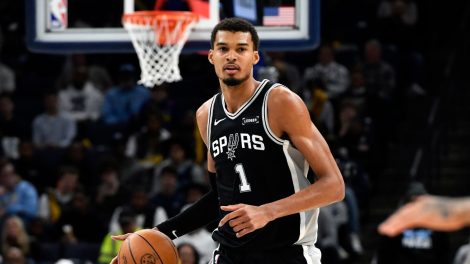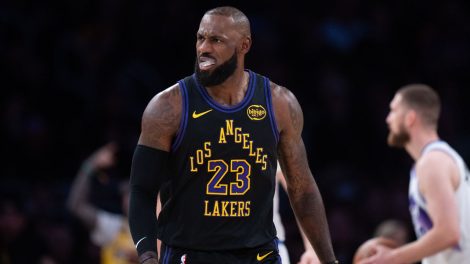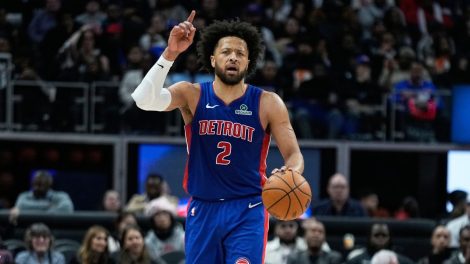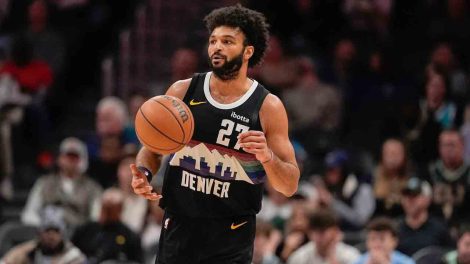Pascal Siakam sizes up his opponent. He posts up his defender and directs them one way, knowing the end goal is to unleash a spin going the other way at a moment’s notice before rising up for the finish. It’s his signature move; it’s what all-stars do. Get to their spot, goad their opponent into thinking they’ve done their job, then hit them with a dagger when it’s least expected.
It’s what the NBA grew accustomed to seeing from last year’s Most Improved Player, but the story hasn’t been quite as spicy in the Orlando bubble.
In seven seeding games after the restart, Siakam has averaged 16.9 points, 5.7 rebounds and 2.3 assists – quite the drop off from the 22.9 points, 7.3 rebounds and 3.5 assists he averages for the season. While he has shot a healthy 35.6 per cent from beyond the arc, it’s Siakam’s finishing at the rim that has become a concern. Within five feet of the basket, he has shot 53.3 per cent over the seven games, compared to 62.3 per cent before the league shutdown and 67.1 per cent last season.
But to suggest that what Siakam does at the rim will be the only true test of his transition to being “The Man” would be reductionist. Instead, it highlights how he has gained the respect he has to this point and why he’s now being challenged to excel in other ways. True superstars are able to exploit whatever the defence gives them, and this season is actually about him getting tested over and over again and learning from it.
Over the course of the four-month hiatus, teams have had a chance to scout the Raptors and study Siakam religiously and seem intent on making life at the rim as difficult as possible. It may well mean that the Cameroonian doesn’t deliver in these playoffs the way Kawhi Leonard did last season, but that isn’t reason to panic or dismiss him. That’s just setting unfair expectations and setting him up for failure.
This was always going to be an information-gathering season for Siakam. He has been thrust into a primary-scoring role by the franchise out of necessity and curiosity rather than genuine desire, and while he has admirably taken on the challenge, his shot chart shows he has more to accomplish in terms of proving his worth as an elite, superstar-level offensive talent.
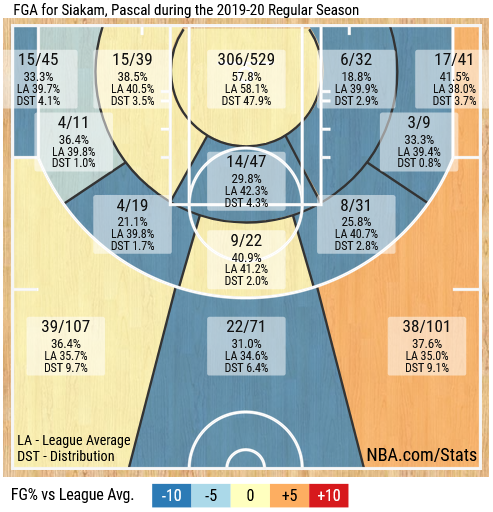
Now, it can be easy to get too negative about the shot chart because of the blue areas, but it’s important to keep in mind that the spots on the floor where he has the most volume – the rim and above the break from the left or right – are around league average or better and that’s tough to do with significant usage and in your first season with teams’ scouting reports shaped around you.
“Stay even keeled, it doesn’t matter what happens,” Siakam said about dealing with highs and lows. “Have the same intensity. Just continue to play and we know there’s probably going to be ups and downs, and you just understand that that’s the nature of the game and the nature of the playoffs. That’s something that I learned last year, is that, you know, continue to just play, stay even-keeled.”
This playoff run is about setting markers for where Siakam is at the end of the run and recognizing where patterns of success can be established for him to find the next level. There will be good moments, but there will undoubtedly be bad ones as he learns more about his new role under the greatest duress the NBA provides.
[snippet id=4725691]
Rim
It’s a huge part of the team’s offence as Toronto leads the league in shot attempts at the rim (less than five feet) per game, and unsurprisingly it’s Siakam who takes more of those shots for the team than anyone else.
And While it has been encouraging to see Fred VanVleet make strides in this aspect of his game in the bubble and Kyle Lowry leads the team in free-throw attempts, as a whole, the Raptors are heavily reliant on Siakam not just getting to the rim and finishing, but penetrating and creating open outside shots for his teammates.
The other reason his scoring around the basket should be taken as a sign of his progress as the lead offensive player is the way his game evolves as the game progresses towards its climax.
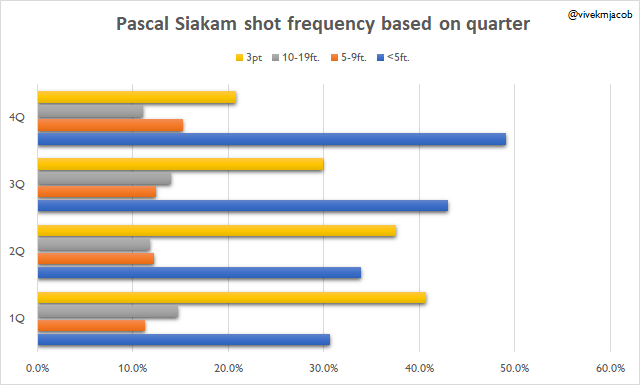
Almost half of Siakam’s field-goal attempts in the fourth quarter come at the rim, and as you can see above, the proportion of shots close-in continuously ramps up over the course of the game and is inversely proportional to his three-point attempts as the game progresses.
Earlier in the season, the 26-year-old had more opportunities where he was able to attack the rim with a head of steam outside of transition but looks like the ones below have become harder to come by. Teams know what Siakam can do with a head of steam, he’s an absolute nightmare in transition, and just as dangerous when he has some runway in half-court sets.
https://giphy.com/gifs/YOXYzuGJKDjhiu4QpG
Teams have recognized the need to consistently match Siakam with size and quickness as well as strength in numbers on the backend. He’s having to contort his body and alter his shot at the last second and it’s made for some difficult finishes.
https://giphy.com/gifs/Q80CRNMdDqdoMr4ByV
Big men will consistently drop in the pick-and-roll coverage and for those who can keep up with Siakam in terms of both size and strength, screening action has played a pivotal role when he’s been successful.
Three-point shooting
Siakam is shooting 35.9 per cent from deep this season, down one per cent from las season. The improvement in this area, though, stems from maintaining virtually the same percentage while upping his attempts from 2.7 to 6.1. Throw in the fact that the majority of his looks came from the corners last season and they’re now primarily from above the break, these are the tangible differences in a player’s shot spectrum that translate to real growth.
The next step? Doing it against the better teams.

As you can see in the table above, Siakam has shot the ball really well against sub-.500 teams but is managing to hit just 29.8 per cent of his attempts against plus-.500 teams (these numbers do not include stats from the eight seeding games). He shot 10-for-29 (34.5 per cent) from deep against the Lakers, Heat, Celtics, Bucks and Sixers in the Orlando bubble.
Going back to the point earlier about how Siakam’s shot distribution becomes more rim reliant as the game wears on, hitting his outside shots early might be a leading indicator for his success late in games. Siakam clearly looks to have his outside shot set up the rest of his game, and perhaps there’s a conversation to be had on the need to be more attack-minded early on. Against weaker teams, he has clearly made them pay over and over again from long distance, but if he isn’t doing the same against the better teams, then they will feel even more confident in packing the paint and daring him to beat them from the outside.
It must be noted that some of Siakam’s struggles during the season – prior to the hiatus – should be attributed to the injuries suffered by the Raptors. It allowed teams to key in on him even more than usual, and without offensive threats like Lowry, Marc Gasol and even Norman Powell at different points in the season, there was undoubtedly added fatigue on those shots as well as pressure.
[snippet id=4931508]
Everything in between
Sure, the mid-range has become a much smaller part of a team’s offence with the three-point revolution, but Siakam must develop his game in between the rim and the three-point line to take his game to the next level and improve the Raptors’ spacing.
Making threes consistently against the best teams will always be massive, but the larger point is that Toronto needs to be able to create threes consistently in a playoff setting. This is made possible by having a release valve in the mid-range. We hear of this term a lot, and it’s something the likes of Kevin Durant and Kawhi Leonard have proven. Kyrie Irving and LeBron James did this in tandem during their Cleveland years together, as well.
Think of the Gasol acquisition for Toronto. The Raptors at the time were an average three-point shooting team before the trade, and so the thinking at the deadline was to acquire a shooter. In fact, based on reports, Nikola Mirotic was Plan A for the Raptors before he fell to Milwaukee. This, of course, was a blessing in disguise for Toronto. Acquiring a player in Gasol who could create better looks for his teammates proved invaluable. The Raptors had good shooters; they just needed another playmaker who could give them that extra split-second and they finished as the top three-point shooting team post the trade.
When Siakam is in the mid-range, it’s a bit of a dead zone as far as his gravity is concerned. Defenders are certainly sticking with him, but it’s the least of all evils. On the season, he’s shooting just over 30 per cent between 10 feet and the three-point line, after shooting close to 45 per cent last season. Showing that his in-between game can indeed do damage will go a long way in not only making them pay extra attention to him and get up into him a bit more, but opening up driving lanes as a result and create the shot he really wants at the rim or a clean outside look for a teammate.
“In tough playoff games, you need somebody that can get you a bucket,” head coach Nick Nurse said. “You need somebody that can just get the ball, and put their head down, and score you one. Or step back and score you one, or whichever way. It’s just to kind of keep things ticking over and keep momentum and spirit and all that stuff going. And that’s his job. He’s done a tremendous job of that this regular season. I would imagine he answers every step-up call, every step-up-and-play call. He’s probably ready for that.”
Siakam has shown over the course of his career that he’s willing to embrace failure, and that’s why he succeeds. Playoff defences will continually push him to evolve on the fly, and he will be better for it. There are several examples of players facing new challenges in the playoffs and needing time to learn from them.
That is the expectation, that teams will work to expose Siakam’s deepest flaws, and he will be dared to problem solve on the fly. The benefit he has is the teammates around him who have helped shoulder the burden manufacturing points throughout the season. But Siakam shouldn’t be blamed if he doesn’t, just trusted to keep learning and keep getting better.
[relatedlinks]
